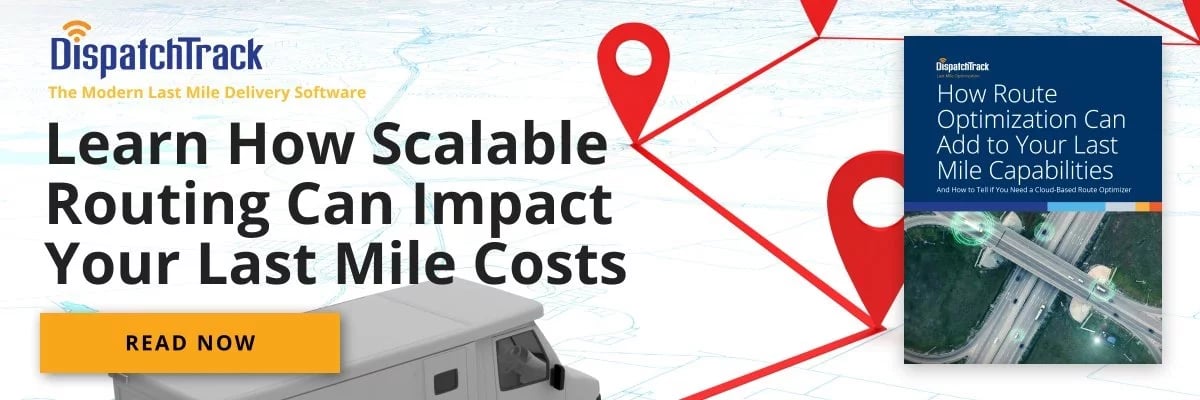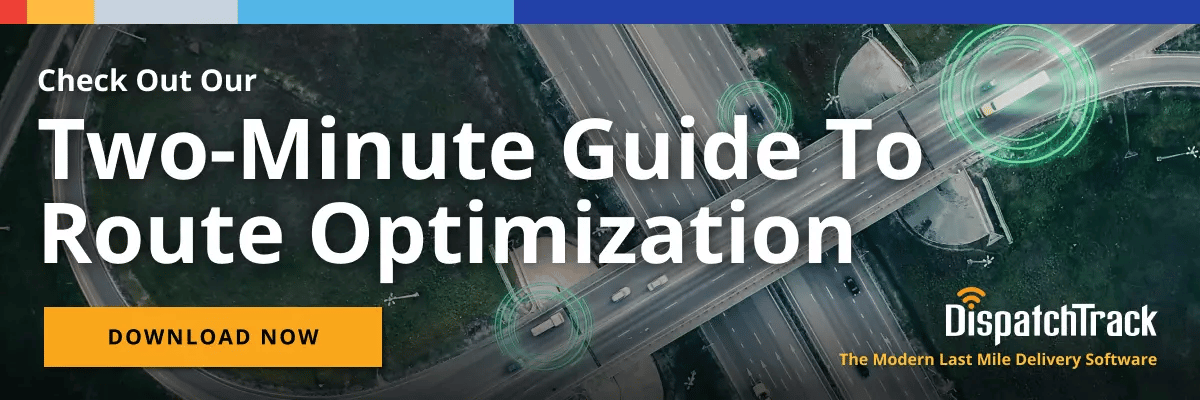To put it bluntly: inefficient route planning is all too common, and it’s jacking up operating costs and negatively impacting bottom lines across the board.
Why? Because manually planning drivers' routes often results in lost time and inaccuracies. Sure, you might be able to find the best route by hand or with a less-than-stellar software solution if you’re just looking at one or two trucks and few orders. But with dozens or hundreds of truckloads the task quickly becomes impossible, and the problems become even worse when fleet managers and dispatchers have no way of knowing whether drivers are even following the routes planned for them.

Luckily, there's a way for fleet operators to ensure efficient and effective route planning processes. Preparing optimized and accurate routes is possible with the right delivery route planning system.
How Route Planning Systems Work
Route planner software replaces the human scheduling and planning effort that comes with plotting the best route for drivers and scheduling stops for each vehicle.
An advanced route planner for trucks will find the most optimal routes in a matter of seconds. This is no mean feat—and not something that all routing software can do—given the fact that the possible permutations for any given route grow exponentially as you add stops.
To make this happen, the software needs to consider many variables affecting delivery times, such as driver skill levels, service time, traffic congestion, weather conditions, and so on. Estimating travel times for trucks requires specialized information (Google Maps estimates won’t account for differences in travel time between cars and different kinds of trucks, for instance), which is why many software solutions with powerful algorithms still don’t produce accurate ETAs.
Plus, some businesses stick to manual route planning, failing to realize that the method causes major inefficiencies in the delivery process, particularly in the last mile. These enterprises are either ignoring or remain unaware of the tell-tale signs that they need to shift to route planning systems for drivers. Here are some of these signs:
- Transportation expenses getting out of control, with owners and managers struggling to get a handle on the spiraling costs
- Lack of data on which routes are profitable and which ones are losing money
- High attrition rates among drivers and route planners
- Losing customers because of late and missed deliveries
- Present delivery route planning is consuming more time and requiring additional staff
- Inability to handle higher volumes

How Route Planning Software Can Help
Modern computing capabilities of route planning software can be quite advanced, allowing the software to make thousands of calculations in a matter of seconds. And the speed of computing remains rapid even if the fleet has dozens or hundreds of vehicles and high volumes for delivery. This computation speed is quickly becoming a necessity, as it offers you the ability to decrease lead times for incoming orders. But that’s not the only benefit of the kind of tool we’re describing. Here are some other ways the right tool helps:
- Eliminates the need to micromanage personnel or drivers
- Decreases the length (and therefore cost) of your average route
- Increases the number of deliveries per day
- Eliminates paperwork
- Reduces labor hours of human planners and drivers
The result is that you can finally get costs under control—all while delighting your customers with on-time delivery.
How Should You Pick a Route Planning System?
Businesses should opt for a dispatch route planner app that offers features that are tailored to ensure successful deployment. Here are the features to look for when choosing a delivery routing app:
1. Real-Time Visibility
Dispatchers and fleet managers often have difficulties managing drivers on the road because of a lack of visibility. They have no way of knowing where the drivers are and whether they're idling too long at drop off points, getting stuck in traffic, or otherwise finding themselves delayed. The lack of real-time information leaves dispatchers and managers wondering if drivers are still on schedule or are already falling behind.
As such, a route optimization app must provide real-time visibility, which can offer back-office teams information on whether a driver will miss a delivery time frame or not. Real-time visibility allows the business to inform consumers of any possible delays ahead of time.
This provides fleet operators the following advantages:
- Insights on driver behavior and improvements in productivity
- Proactive exception management for late deliveries
- Quick rerouting as needed
- Improvements in driver safety
2. Accurate ETAs
Gone are the days when customers would be satisfied with long delivery time frames. Consumers nowadays would balk if you provided them the expected time of arrival (ETA) of 9:00 am to 2:00 pm or 1:00 pm to 6:00 pm.
Providing customers with a precise, accurate ETA will go a long way in improving customer satisfaction scores. Thus, it's not enough for a routing app to provide optimal routes: it should also offer accurate ETAs.
3. Easy Integration and Support for Mobile Devices
One of the major benefits of the right routing software is that it eliminates paperwork. Planners can create routes on their desktops and then push turn-by-turn directions to a driver’s smartphone. Planning routes and distributing them via various devices can eliminate the cost of expensive GPS hardware, to say nothing of manually updating GPS systems and maintaining them.
Plus, it's not enough to have optimized route plans on hand, as distributing them as quickly as possible is just as important as finding the best routes. This is particularly true in cases where additional instructions are required or when there are last-minute changes to assignments and routes.
It's best to choose software that allows smooth integration so that any changes made from the local computer will be distributed quickly to the drivers' mobile devices.
4. Scalability
All businesses want to be in a position to grow as demand for their service increases. Unfortunately, some planners can only handle a certain number of routes, which makes scaling up difficult or impossible.
A route planner shouldn’t set any limitations and must be able to support business growth. Businesses, after all, may want to increase delivery volumes or expand delivery areas. Thus, the truck route planner software must offer unlimited capacity for the following:
- Optimizations
- Routes
- Customer addresses
- Stops per routes
- Planning horizons
- Uploading of videos, images, tests
- Notes
- Custom data
In the end, getting a route planning system for deliveries is a step in the right direction, but it won't necessarily allow businesses to operate more efficiently. Companies must choose dynamic routing software that's capable of planning, distributing, and changing routes as needed—and they ought to choose one that works as a SaaS solution. Only in this way can you ensure real scalability.
